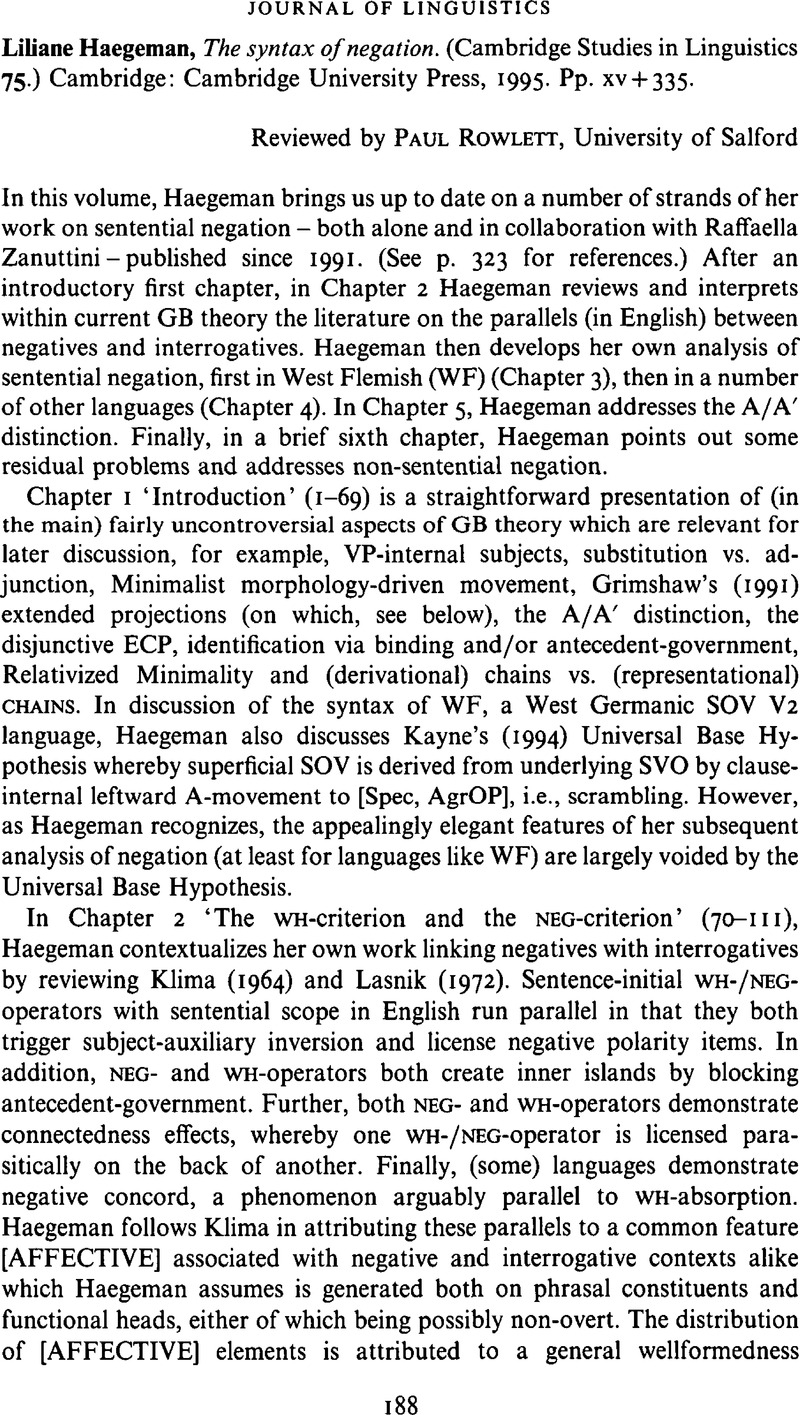No CrossRef data available.
Article contents
Liliane Haegeman, The syntax of negation. (Cambridge Studies in Linguistics 75.) Cambridge: Cambridge University Press, 1995. Pp. xv+335.
Review products
Liliane Haegeman, The syntax of negation. (Cambridge Studies in Linguistics 75.) Cambridge: Cambridge University Press, 1995. Pp. xv+335.
Published online by Cambridge University Press: 28 November 2008
Abstract
An abstract is not available for this content so a preview has been provided. Please use the Get access link above for information on how to access this content.

Information
- Type
- Reviews
- Information
- Copyright
- Copyright © Cambridge University Press 1996
References
Acquaviva, P. (1994). The representation of operator-variable dependencies in sentential negation, Studia Linguistica. 48 91–132.CrossRefGoogle Scholar
Brody, M. (1993). Lexico-logical form: a radically minimalist theory. Ms., University College London.Google Scholar
Klima, E. S. (1964). Negation in English. In Fodor, J. A. & Katz, J. J. (eds.) The structure of language. London: Prentice Hall. 246–323.Google Scholar
Rizzi, L. (forthcoming). Residual verb second and the wh-criterion. In Belletti, A. & Rizzi, L. (eds.) Parameters and functional heads: essays in comparative syntax. Oxford: Oxford University Press.Google Scholar

